Author: everbella
Two-Ingredient Growth-Boosting Hair Mask
Have you ever wondered just how fast your hair can grow?
If you’re focusing on hair growth on the inside (taking supplements) and the outside (topical treatments), then you may just find out!
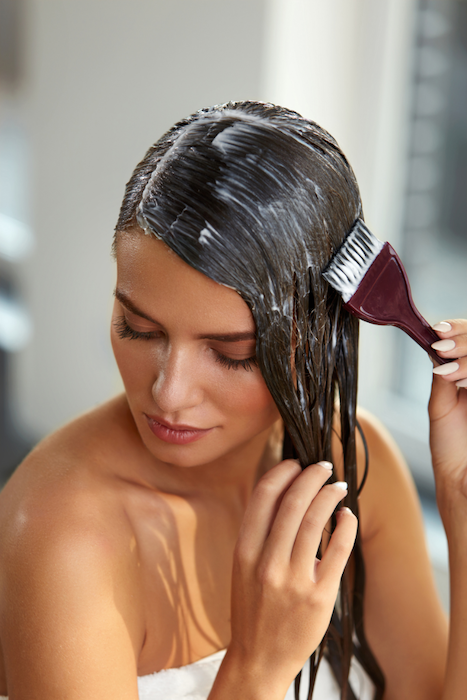
We already know that Complete Biotin Plus is the ultimate hair-boosting formula to take if you want thick and healthy hair (click here to learn about its incredible hair growth ingredients).
But what should you be doing on the outside?
Keep reading to see a simple hair mask recipe that can increase your hair growth!
Whether you’re trying to get your hair as thick and long as possible for a special event or you simply want to feel as confident as possible walking down the street, give the recipe below a try! It’s only TWO ingredients (that most people have in their kitchen already, anyway), so it’s super easy and affordable to make!
So, let’s get into it, followed by the reasons why these two ingredients can boost hair growth!
Your growth boosting hair mask recipe
Ingredients:
– 1 tablespoon of coconut oil
– 1 teaspoon of cinnamon
Directions:
1. Mix these two ingredients in a bowl, and make sure they are mixed well.
2. Part your hair down the center and start by applying it down the part and on your scalp.
3. Use your fingertips to massage the product into your scalp.
4. Tie your hair up and cover it with a shower cap or a towel.
5. Let this mask sit for 30-45 minutes, and then rinse with your regular shampoo and conditioner.
This mask is best and most effective if used once a week.
As you can see, doing external things to help your hair grow couldn’t be easier! But you may be wondering… why coconut oil and cinnamon? Let’s find out!
Why coconut oil?
Coconut oil is incredibly healthy for your hair and scalp, so it makes sense to make it the base for a hair mask.
Research has shown that coconut oil can help eliminate fungal infections on the scalp, calm itchiness and irritation, treat dead ends, protect from heat damage, and more. [1, 2, 3]
Why cinnamon?
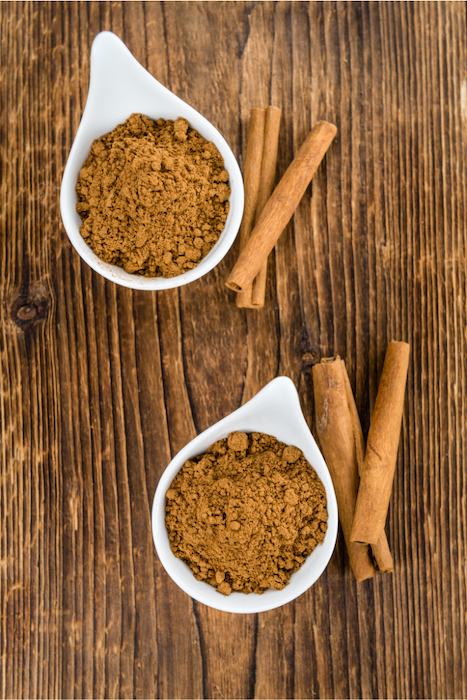
It’s a simple kitchen ingredient, but when mixed into your hair, it can be much more than that! Research has shown that cinnamon can improve hair length, with one study showing it to be just as effective as a popular hair-growth medication! [4]
Researchers believe this could have to do with some of the compounds found in cinnamon. For example, procyanidin has been connected with boosting hair growth, and cinnamaldehyde, the main compound in cinnamon, increases blood circulation to hair follicles, supporting hair growth. [5]
If you want to try cinnamon on both the inside and the outside, cinnamon is one of Complete Biotin Plus’ many hair-boosting ingredients. Not only that, but it makes the formula taste absolutely delicious!
>>> Click here to learn about all of the incredible ingredients in Complete Biotin Plus that can give you full, healthy, and beautiful hair!
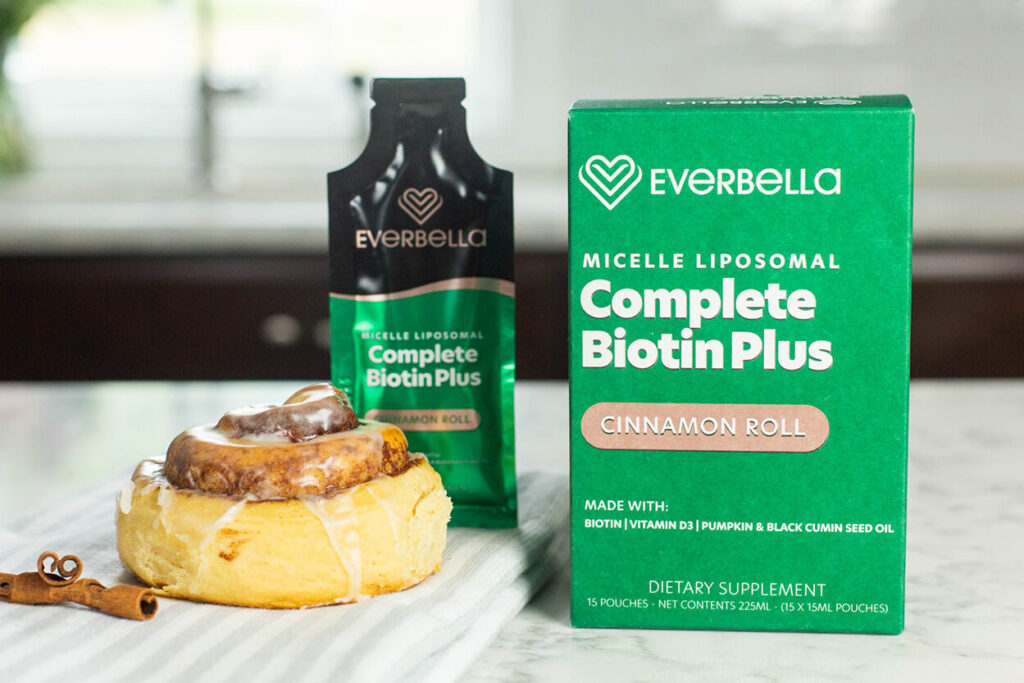
Simple Caramel Swirl Ice Cream Recipe
Do you scream for ice cream? Because legend has it we all do it. Well, either way, below is a super simple ice cream recipe for you to try. And you don’t need an ice cream maker to make it! You just need to be willing to do a bit of whisking.
For the recipe below, you can add your Complete Collagen Plus into the ice cream itself, or wait until you’re serving it to drizzle on top. No matter which option you choose, it’s a fun way to get your daily dose of collagen!
Serves 6
Here’s what you’ll need:
- 1½ cups milk
- 1½ cups heavy cream
- ⅔ cup sugar
- 1 tablespoon vanilla extract
- 1-2 tablespoons EverBella’s Complete Collagen Plus
- ⅛ teaspoon salt
Here’s what you’ll need to do:
1. In a bowl, mix all ingredients except for the Complete Collagen Plus. Once mixed, pour into an 8-10 inch square baking pan. Place it in the freezer.
2. FIRST FREEZE: After 90 minutes, remove from the freezer and whisk the mixture, scraping the sides of the pan and breaking up any frozen chunks. Return the pan to the freezer and continue freezing.
3. SECOND FREEZE: Check it again after 45 minutes. Remove from the freezer and whisk the mixture, scraping the sides of the pan well. Use a sturdy whisk to whip the mixture a bit as it begins to freeze. Make sure you’re scraping the edges completely every time. Return to the freezer as quickly as possible after whisking the mixture each time.
4. ADDITIONAL FREEZING STEPS: Continue freezing the mixture, checking it again after 30 minutes. Remove from the freezer and whisk the mixture, scraping the sides of the pan well. Repeat this process at least two more times, every 30 minutes. After a couple of hours, it should be thickening to a slushy soft-serve consistency.
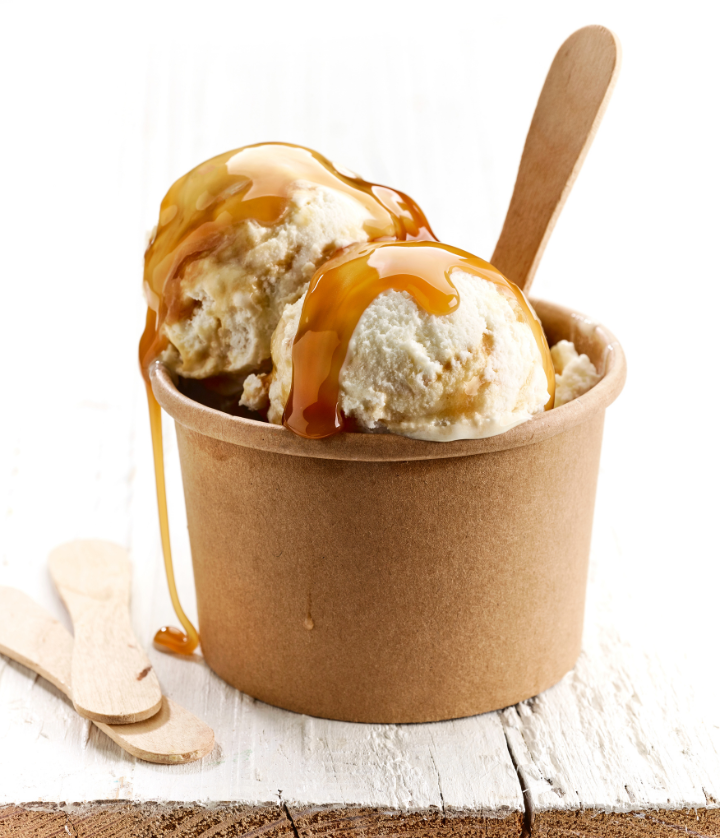
5. Continue breaking the ice cream up and stirring it for as long as you like. The longer that you whisk the ice cream and continue breaking it up as it freezes, it will create an airier or fluffier final product. Ice cream without a machine typically takes 3-4 hours to freeze to a soft-serve consistency.
6. On your final stir, add in a drizzle of Complete Collagen Plus before placing back in the freezer for the last time. This will give you a nice frozen line of caramel goodness through your ice cream. Alternatively, drizzle the collagen over your ice cream once served.
Enjoy!
I hope you enjoy your homemade ice cream!
If you’re wanting to make this, but are getting low on Complete Collagen Plus, then I have great news…
Right now you can save up to 25% on Complete Collagen Plus!
9 Biotin Fun Facts
Are you looking to learn more about biotin? Then you came to the right place!
Read on to learn 9 amazing fun facts about your favorite B-vitamin, biotin.
1. Biotin is a type of B-vitamin, also known as vitamin H
Known as vitamin B7, this nutrient is also often referred to as “vitamin H”. The “H” comes from the German words for hair and skin, “Haar und Haut.”
2. It plays an important role in metabolism, specifically in the processing of carbohydrates, fats, and proteins

Biotin plays an important role in the body’s metabolism as a coenzyme. It helps to facilitate several enzymatic reactions, particularly those involved in the processing of carbohydrates, fats, and proteins.
Biotin acts as a carrier of carbon dioxide in the body, transferring it from one molecule to another as part of metabolic reactions. In this way, biotin helps to ensure the proper functioning of several metabolic pathways, including the citric acid cycle, which is crucial for producing energy in the form of ATP.
Additionally, biotin is involved in the synthesis of glucose from noncarbohydrate sources and in the production of fatty acids and cholesterol.
Overall, biotin plays a key role in maintaining the body’s metabolic balance and supporting its overall health.
3. Biotin is known to help support healthy skin, hair, and nails
Biotin is known to help support healthy skin, hair, and nails because of its role in the metabolism of fatty acids and in the production of keratin, the structural protein that makes up the hair, nails, and skin. A biotin deficiency can lead to brittle nails, hair loss, and skin rashes, while biotin supplementation has been shown to improve nail thickness and hair health.
4. It is water-soluble, meaning any excess biotin not used by the body is excreted in the urine
When it comes to biotin, there’s no taking too much, since the body will just get rid of any biotin it isn’t going to be using right away.
The body also doesn’t store biotin, and the nutrient has a half-life of two hours within the body. This means that after two hours, the amount of biotin has been reduced by half, and in another two hours it will once again be reduced by half, then so on and so forth until it’s completely gone.
5. Biotin deficiency can lead to skin rashes, hair loss, and brittle nails
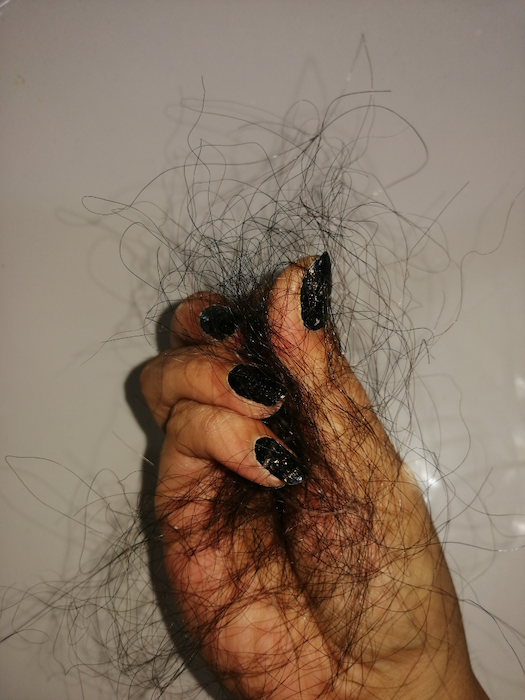
Biotin plays an important role in the health of skin, hair, and nails. As such, biotin deficiency can lead to skin rashes, hair loss, and brittle nails because biotin is involved in various metabolic processes, including the production of fatty acids, which are essential components of the skin and hair, and the metabolism of amino acids, which are the building blocks of nails.
Additionally, biotin is involved in the metabolism of glucose, which is essential for maintaining healthy skin. When there is a deficiency of biotin, these metabolic processes are disrupted, leading to symptoms such as skin rashes, hair loss, and brittle nails.
6. Our gut bacteria can make biotin
Gut bacteria have the ability to produce biotin. Biotin is synthesized by gut bacteria through the degradation of dietary proteins and the metabolism of certain amino acids. This process involves the production of biotin by gut bacteria, which is then absorbed through the intestinal wall and used to support various metabolic processes.
The amount of biotin produced by gut bacteria varies depending on the type and number of bacteria present, as well as on other factors such as diet, age, and health status.
7. The RDA for biotin is 30 mcg
The Recommended Dietary Allowance (RDA) for biotin is as follows:
- Infants 0-6 months: 5 micrograms (mcg)
- Infants 7-12 months: 6 mcg
- Children 1-3 years: 8 mcg
- Children 4-8 years: 12 mcg
- Children 9-13 years: 20 mcg
- Adolescents and adults: 25-30 mcg
Remember, this is the bare minimum health agencies believe you should be getting in order to avoid a deficiency.
8. Biotin boosts hair follicle growth

Biotin plays a role in promoting hair growth and preventing hair loss by supporting the health of hair follicles. Biotin does this by:
Regulating the metabolism of fatty acids: Biotin is involved in the metabolism of fatty acids, which are essential components of the hair follicle and hair shaft.
Supporting the production of keratin: Biotin helps in the production of the structural protein keratin, which makes up the hair shaft.
Improving blood circulation: Biotin helps improve blood circulation to the hair follicles, providing them with essential nutrients for growth.
Preventing oxidative stress: Biotin has antioxidant properties that protect the hair follicles from oxidative stress, which can damage hair growth.
9. It’s great for your eye health, liver, and nervous system
Biotin is important for the health of several key body systems, including the eyes, liver, and nervous system.
Eye health: Biotin helps maintain healthy eyes by supporting the metabolism of fatty acids and glucose, which are important components of the retina and other parts of the eye.
Liver health: Biotin plays a role in liver function by assisting in the metabolism of amino acids and other nutrients, as well as in the production of glucose and the synthesis of fatty acids.
Nervous system: Biotin is involved in the production of energy and the metabolism of fats, amino acids, and glucose, which are all important for the proper functioning of the nervous system. Biotin also plays a role in the formation of certain neurotransmitters, which are chemical messengers that help transmit signals in the nervous system.
Biotin your body can use
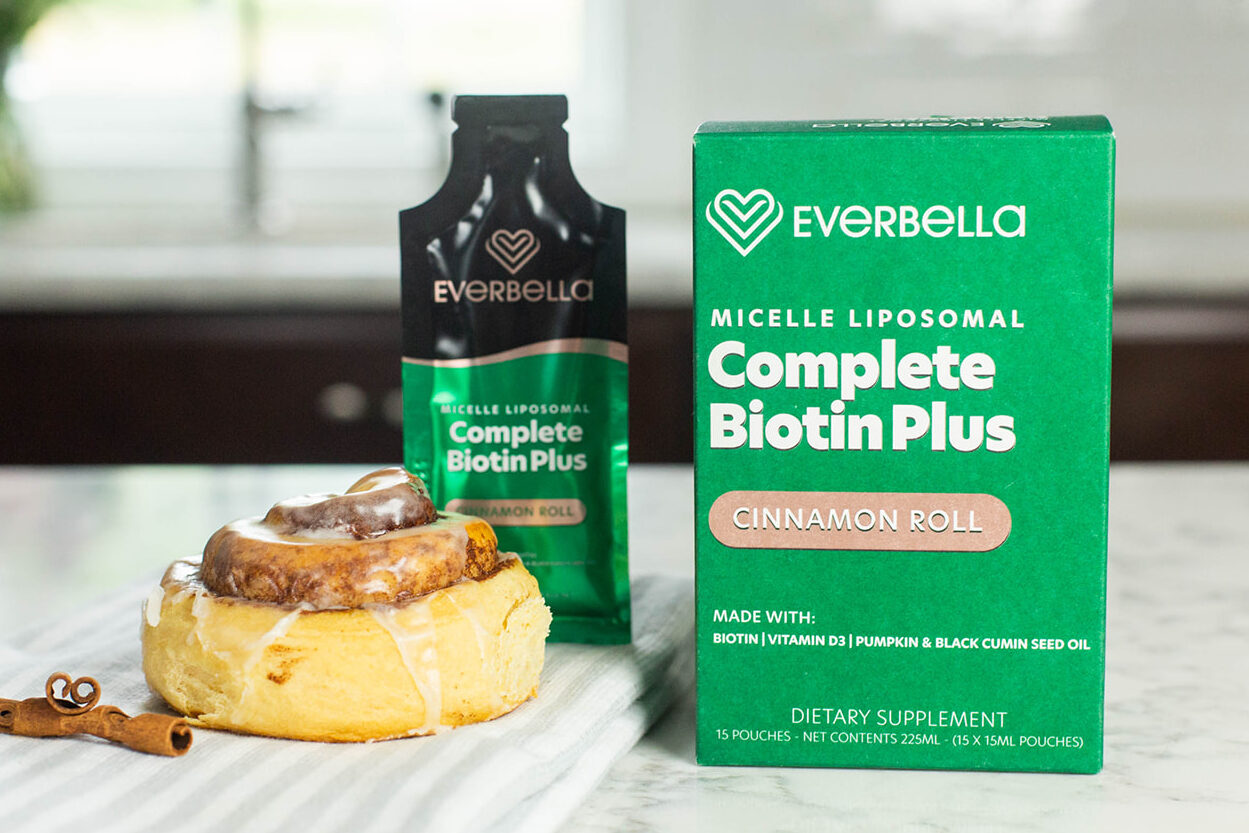
If you want your body to share in the fun of biotin, there’s no better way to get it than Complete Biotin Plus.
This is because EverBella’s formula contains a patented micelle liposomal formula which ensures proper absorption and use of the biotin.
But it also contains a few other incredible compounds that support beauty and health!
The Top 3 Ways Collagen Supports Healthy Bones
Collagen is the most abundant protein found in the body. Among many other things, it plays a crucial role in maintaining strong and healthy bones.
In today’s article, I want to get into the top three ways collagen can help the health of your bones. But first, you should understand why the health of your bones is so important in the first place!
The importance of bone health

Maintaining healthy bones is important for several reasons, especially as you age. Here are some of the key reasons:
- Prevents fractures: Strong and healthy bones can resist fractures and other injuries, reducing the risk of broken bones and the associated pain, disability, and rehabilitation.
- Supports mobility: Bones provide the framework for the body and support movement and mobility. Maintaining healthy bones helps ensure that you can continue to move freely and independently as you age.
- Prevents osteoporosis: Osteoporosis is a condition in which bones become fragile and more likely to fracture. Maintaining healthy bones through adequate calcium and vitamin D intake, regular exercise, and a balanced diet can reduce the risk of osteoporosis and other age-related bone disorders.
- Supports overall health: Bones are also involved in producing blood cells, storing minerals, and regulating hormones, so maintaining healthy bones is essential for overall health.
Now that you know some of the main reasons why your bones are so vital to your overall health, let’s take a look at how collagen can help!
The top 3 ways collagen supports healthy bones
1. Provides structure
Collagen is a key component of the bone matrix and provides structure to the bones. It is made up of long chains of amino acids that cross-link to form a strong and flexible network. This network provides mechanical support to the bones, helping them resist fractures and other injuries.
Increased collagen intake has been shown to improve bone health by increasing bone density and supporting the growth of new bone tissue.
In addition, some studies have shown that increased collagen intake can also increase the body’s production of other important bone building blocks, such as calcium, phosphorus, and Vitamin D, further contributing to healthy bones.
2. Increases bone density
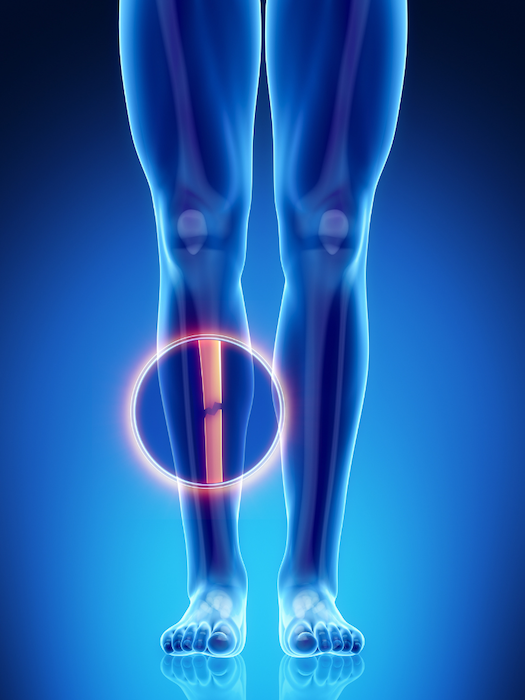
Collagen plays a crucial role in increasing bone density, which is the measure of how much mineral matter is packed into the bones. Higher bone density can reduce the risk of osteoporosis and other age-related bone disorders.
Increased collagen intake has been shown to stimulate the growth of new bone cells and enhance mineralization, which is the process by which minerals, particularly calcium, are deposited into the bones. This leads to stronger bones and increased bone density over time.
Additionally, collagen has anti-inflammatory properties, which can reduce inflammation in the body and promote healthy bones. Inflammation can interfere with the normal processes of bone growth and maintenance, so reducing inflammation may help improve bone health.
3. Supports joint health
Collagen also plays a role in supporting joint health, which in turn helps promote healthy bones. Collagen serves as a cushion between bones and helps reduce friction and wear in joints. This can help reduce joint pain, stiffness, and improve overall joint function.
Increased collagen intake has been shown to improve joint health by providing the building blocks necessary for the production of cartilage, the tissue that cushions joints. Cartilage helps absorb shock and reduce friction, which can lead to less wear and tear on the joints and less inflammation.
And because collagen has anti-inflammatory properties, it may reduce inflammation in the joints and further support the health of your bones.
The #1 way to get collagen
If you’re looking to increase collagen levels, drinking beefy bone broths and choking down pills or powders may help a bit.
But what can REALLY help is micelle liposomal collagen.
This is a formula where the collagen peptides are infused with the lipid molecules, micelles and liposomes, for a HUGE increase in absorption. These help deliver the collagen peptides directly to your bloodstream where they can begin benefiting you right away.
If you want to learn more about this and actually start absorbing your collagen…
References:
7 Tips For A Healthy Pregnancy
Pregnancy is a wonderful and exciting part of life! But if you’re pregnant or planning a pregnancy, you may be concerned about the health of both yourself and the baby growing inside of you.
That’s why I wrote this blog – so you can know 7 of the most important things to focus on while carrying and have the healthiest pregnancy possible! So keep reading to find out how you can be best prepared before, during, and after pregnancy.
1. Maintain a healthy diet
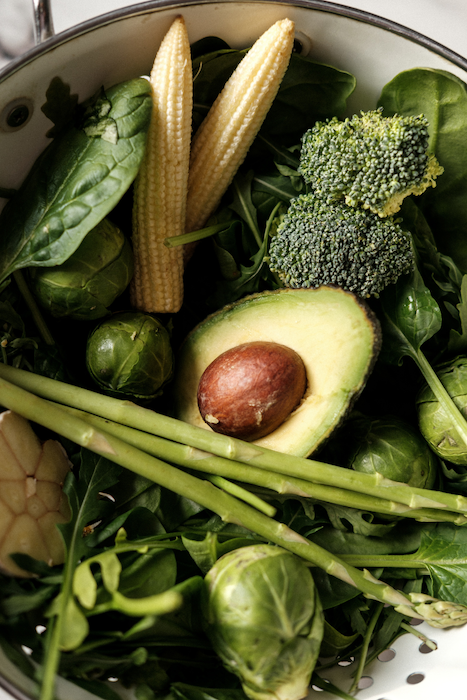
Maintaining a healthy diet during pregnancy is important for several reasons.
First, a healthy diet can help ensure that both the mother and the developing baby are getting all the necessary nutrients for healthy growth and development. The baby’s brain and other organs are developing rapidly during pregnancy, and a diet lacking in essential nutrients can negatively impact fetal development.
Second, a healthy diet can also help manage pregnancy symptoms such as morning sickness, constipation, and gestational diabetes. It also reduces the risk of certain pregnancy complications, such as pre-eclampsia, a serious condition that can affect both the mother and the baby.
Third, a healthy diet during pregnancy can also benefit the mother by helping her to maintain a healthy weight and energy level, which can aid in her overall health during pregnancy, and support her during labor and delivery.
A diet rich in fruits, vegetables, whole grains, lean proteins, and healthy fats can provide a variety of essential nutrients that are necessary for a healthy pregnancy. It’s important to consult a healthcare professional to help plan a proper and healthy diet to suit individual needs.
2. Get regular prenatal care
Prenatal care is when you get checkups from a doctor, nurse, or midwife throughout your pregnancy. It helps keep you and your future baby healthy for many reasons:
- Monitoring the health of the mother and the baby: Prenatal care can help detect and prevent potential health issues for both the mother and the baby. Regular check-ups can monitor the baby’s growth and development, and ensure that the pregnancy is progressing normally.
- Early detection and management of complications: Prenatal care can detect potential complications early on, such as gestational diabetes, hypertension, pre-eclampsia, and others. When detected early, many of these complications can be managed to minimize any risks to the mother and the baby.
- Supporting the mother’s emotional and physical well-being: Prenatal care also includes counseling and support for the expectant mother, by giving her the knowledge and tools to have a healthy pregnancy and make informed decisions about her care, addressing her concerns or questions, and providing information on labor, delivery, and postpartum care.
- Preparation for labor and delivery: Prenatal care also includes information and preparation for labor and delivery, and can help identify any potential issues that may arise during delivery, so that the healthcare provider can plan accordingly.
Regular prenatal care is vital in ensuring a healthy pregnancy, childbirth, and postpartum for both mother and baby. It is also essential for a healthcare provider to monitor any potential risks or complications and take appropriate actions to ensure the safe and healthy development of the baby and mother.
3. Stay active
Getting active during pregnancy may feel like a challenge, as you’re more likely to feel fatigued. You may just want to sit, relax, and feed those food cravings, but it’s important to remain active throughout your pregnancy. This can be beneficial for several reasons:
- Helps to maintain a healthy weight: Regular exercise can help a pregnant woman to maintain a healthy weight, which can reduce the risk of gestational diabetes, hypertension, and other pregnancy-related complications.
- Increases energy levels: Physical activity can help pregnant women feel more energized, which can be especially helpful during the fatigue-inducing first and third trimesters.
- Improves mood and reduces stress: Exercise can help to improve mood and reduce stress, anxiety, and depression which are commonly experienced during pregnancy.
- Prepare the body for labor and delivery: Regular physical activity can help prepare the body for labor and delivery by strengthening the muscles used during childbirth and helping to build endurance.

- Promote recovery postpartum: Regular exercise during pregnancy can improve postpartum recovery by increasing strength and endurance, helping to improve sleep, and reducing the risk of postpartum depression.
It’s important to note that not all exercises are safe during pregnancy, depending on individual health conditions, as well as the stage of pregnancy. It is recommended to consult a healthcare professional and get a personalized exercise plan. In general, pregnant women should aim for at least 150 minutes of moderate-intensity aerobic activity every week, such as brisk walking, swimming, or prenatal yoga.
4. Avoid certain substances
Avoiding smoking, alcohol, and drugs during pregnancy is important because they can have a negative impact on the health of the mother and the developing baby.
- Smoking: Smoking during pregnancy can cause a variety of serious health problems for the baby, including low birth weight, premature birth, and an increased risk of certain birth defects. It also increases the risk of miscarriage and stillbirth. Smoking can also cause respiratory problems for the baby after birth, and increase the risk of sudden infant death syndrome (SIDS).
- Alcohol: Drinking alcohol during pregnancy can cause a wide range of serious birth defects and developmental problems known as Fetal Alcohol Spectrum Disorders (FASD). These disorders can lead to physical, behavioral, and cognitive problems that last a lifetime.
- Drugs: Using drugs such as cocaine, methamphetamines, and opioids can have a negative impact on the baby’s growth and development, and can increase the risk of birth defects, premature birth, and other serious health problems. They also can lead to addiction and withdrawal symptoms in newborns after birth, which can be dangerous and require medical attention.
It’s important to be aware of the risks associated with smoking, alcohol, and drugs during pregnancy, and to take steps to avoid them. If you are pregnant and struggling to quit smoking, drinking, or using drugs, it’s important to seek help from a healthcare professional, counselor, or support group as soon as possible.
5. Get enough sleep
When you’re pregnant, the world doesn’t stop. You may still have to work, do things around the house, and run errands. But if you’re pregnant, it’s important to carve out extra time in your day to not just relax, but get more sleep. Getting enough sleep during pregnancy is important for several reasons:
- Maintaining overall health: Adequate sleep is essential for overall health and well-being. It can help boost the immune system, improve mood, and reduce stress and anxiety.
- Supporting fetal growth and development: During pregnancy, the body is working hard to support the growth and development of the baby. Sleep is necessary for the body to effectively perform these functions, and to ensure that the baby is getting the nutrients it needs.
- Managing pregnancy symptoms: Pregnancy can cause a variety of symptoms, such as morning sickness, fatigue, and discomfort, which can make it difficult to get a good night’s sleep. Adequate sleep can help to manage these symptoms and make them more bearable.
- Preparing for labor and delivery: Pregnancy can be physically and emotionally taxing, and sleep is necessary to help the body recover and prepare for labor and delivery.
- Postpartum recovery: Getting enough sleep during pregnancy can also help prepare the body for postpartum recovery. The lack of sleep can affect the mood and energy during the postpartum period which can be challenging enough with a newborn.
It’s important to note that as pregnancy progresses, and the baby grows, it might become more difficult to find a comfortable position to sleep in. During this time, it can be helpful to use pillows and other comfort measures to help find a comfortable position. It’s also suggested to talk to your healthcare provider about any sleep issues or difficulties experienced during pregnancy.
6. Manage stress
Managing stress during pregnancy may be a challenge since you could be concerned about a range of things. This could be financial stress or – if this is your first child – common worries about becoming a parent. But it’s important to seek out ways to truly relax, as this can benefit you and the baby in many ways:

- Maintaining overall health: High levels of stress can affect the overall health and well-being of the mother, including her physical and mental health, and her ability to manage the demands of pregnancy.
- Supporting fetal growth and development: Stress can have a negative impact on the baby’s growth and development. Stress hormones can cross the placenta, which may affect the baby’s physiology and development.
- Managing pregnancy symptoms: High levels of stress can worsen pregnancy symptoms, such as nausea, fatigue, and anxiety.
- Preparing for labor and delivery: Stress can affect the mother’s ability to cope with the physical and emotional demands of labor and delivery.
- Postpartum recovery: Stress during pregnancy can also affect the mother’s ability to adjust to the changes and demands of being a new parent, and can make it more difficult to cope with the demands of postpartum recovery.
Managing stress during pregnancy can be done through a variety of methods such as exercise, yoga, meditation, support groups, healthy eating, and ensuring sufficient relaxation. It’s essential to consult a healthcare professional if feeling overwhelmed with stress, they may be able to offer additional support and advice, such as counseling or therapy.
7. Ensure proper biotin levels
Biotin, also known as vitamin H or B7, is important during pregnancy because it plays a role in fetal growth and development. Biotin is a B-vitamin that helps the body convert food into energy, and also helps support the health of the skin, hair, and nails.
During pregnancy, biotin is important for the healthy development of the baby’s neural tube, which eventually develops into the baby’s brain and spinal cord.
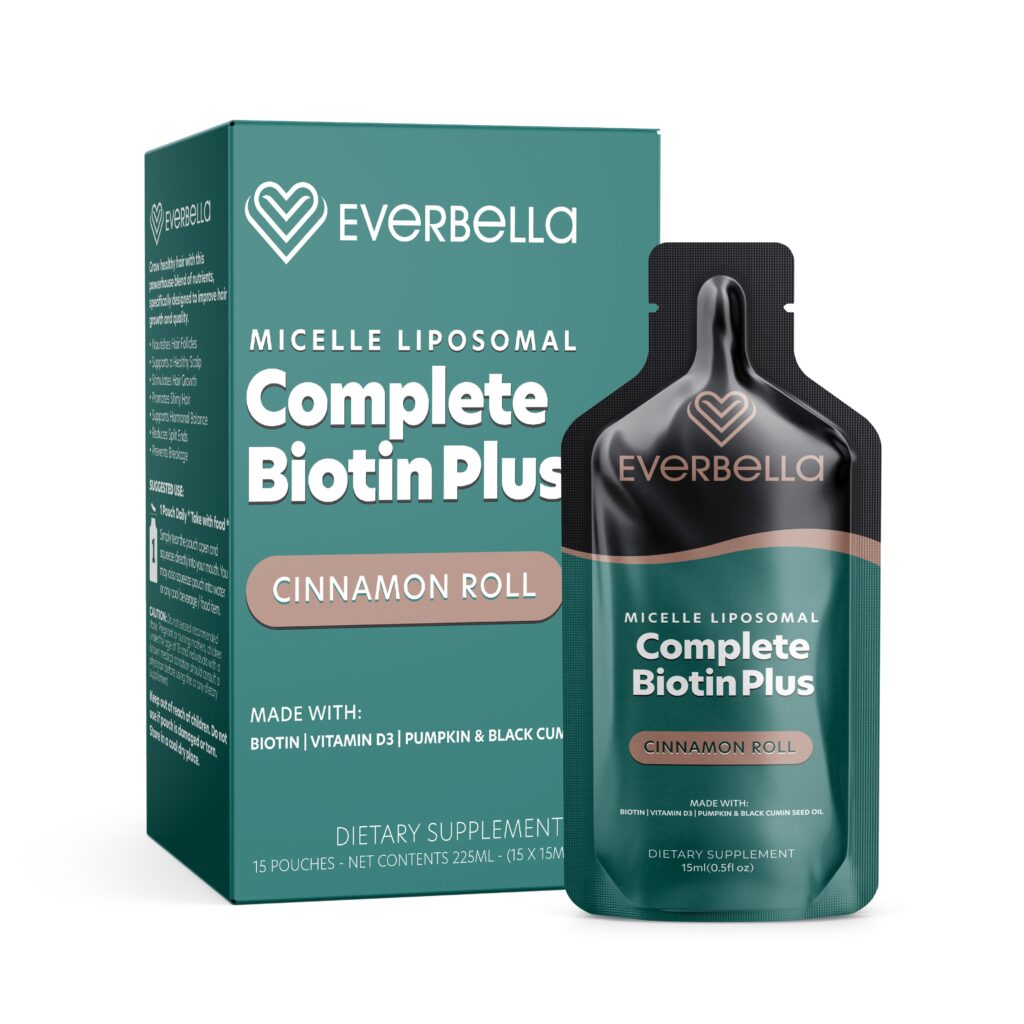
Biotin deficiency can occur during pregnancy, with about half of pregnant women estimated to have low levels. [1]
Deficiency can lead to skin rash, hair loss, and low blood sugar. But during pregnancy, low biotin can negatively affect the baby and cause birth defects. [2]
If you’re planning on getting pregnant, are pregnant, or have recently been pregnant, it’s important that you think about your biotin levels.
Complete Biotin Plus from EverBella will not only restore biotin levels, it includes four other crucial compounds for your health and beauty.
The Link Between Skin And Psychology
Unlike a condition like hypertension or diabetes, for example, there is no hiding a skin condition. Our skin is the first thing people see when we meet them. So, it makes sense that these types of conditions can have an effect on us mentally.
But while the causes of these conditions can cast a wide net, how does our psychology fit in? This is a newer field of research called psychodermatology and though funding and studies are limited, there have been some interesting results.
Keep reading to learn more about how your psychology can affect your skin.
Chicken or the egg scenario?

Like wondering if the chicken or the egg came first, researchers have wondered if skin conditions can cause psychological issues or vice versa.
Of course, there are people who have skin conditions who are fully and completely mentally sound, while there are people with perfect skin who are struggling. That being said, having a skin problem can trigger intense distress.
In a 2014 National Rosacea Society survey of 1,675 patients with rosacea – a condition that causes facial redness and related symptoms – 90% of respondents reported lowered self-esteem and self-confidence, 54% reported anxiety and helplessness, and 43% reported depression. More than half said that they frequently avoid face-to-face contact.
The problem is that these types of psychological problems can exacerbate skin problems. Common issues that have been shown to be made worse by stress include acne, rosacea, psoriasis, eczema, pain, and hives.
But if these psychological stressors were only the result of skin conditions, then would treating the psychological conditions have an effect on the skin?
Mind over matter?
Though having skin issues can impact many things such as self-esteem and confidence, focusing on mental well-being can actually have a positive effect on the skin.
Researchers state that the key is to give patients a sense of control over their conditions and help them find better ways to react to them. For example, cognitive-behavioral therapy can help patients manage stress and stop mentally over-exaggerating the severity and consequences of their skin condition.
Other forms of therapies which have proven to be effective on the skin include:
- Hypnosis
- Support groups
- Biofeedback
- Meditation
- Guided imagery
- Progressive muscle relaxation
- And other forms of psychotherapy
So not only are these practices helping patients’ state of minds, but also their skin. For example, in one study patients who listened to a mindfulness meditation program while undergoing phototherapy treatment for psoriasis needed 40% less exposure to ultraviolet light than others.
Is your stress harming your skin?

Even minor stress can have a negative impact on the skin, making you more prone to breakouts. If you have a skin condition, any amount of stress can exacerbate it. This, in turn, can cause you more stress, only worsening the condition more.
It may be difficult to do, but if you feel you may be stuck in this cycle, it’s important to take control and look for practices that can help you relax and have a better outlook on your skin.
Researchers say that even just imaging and meditation can help. Focusing on an image associated with the desired change – such as skin that’s warmer, cooler, moister, or less itchy – can be one way to mentally refocus. If you believe in mind over matter, this can be a fun and potentially productive exercise.
If you want to plan a full attack, then these types of mental exercises PLUS compounds that can help bolster your skin’s health can really give you an advantage.
When you’re ready to take control of your skin’s health, Complete Collagen Plus will be there to support you. Give your body what it needs to build strong, elastic, and healthy skin once again.
